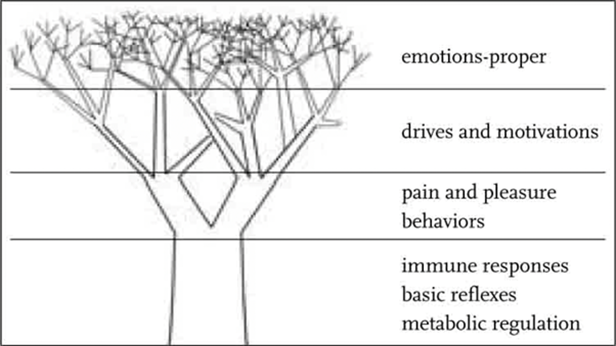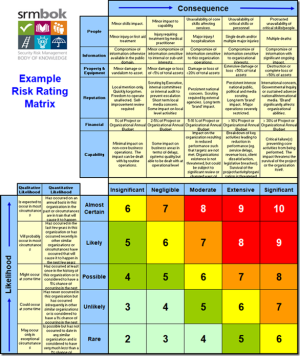As with all of my work in books, videos and blogs I provide support, practical alternatives, positive options, further learning, methods and a wealth of training material and tools (for free) to implement a SPoR approach to risk. The content of this blog is no different, except in this case I have decided to include extensive quotes from a global leader in cognitive neuroscience.
I include these extensive quotes because it is clear that very few in safety follow up or read the resources on offer or even read the blog. Most of the time it seems safety people read into the blog what they want it to mean, according to a certain worldview, rather than actually read the blog. None of the sources I quote come from the disciplines of Science, Engineering or Safety. There are other valid worldviews other than these.
The following quotes offer insight into the notions of homeostasis and allostasis and are both critical for an understanding of risk and human decision making:
Antonio Damasio (2003) Looking for Spinoza: Joy, Sorrow, and the Feeling Brain. Harvest Books. London.
(p.30ff)
‘The single word homeostasis is convenient shorthand for the ensemble of regulations and the resulting state of regulated life’.
‘All living organisms from the humble amoeba to the human are born with devices designed to solve automatically, no proper reasoning required, the basic problems of life. Those problems are: finding sources of energy; incorporating and transforming energy; maintaining a chemical balance of the interior compatible with the life process; maintaining the organism’s structure by repairing its wear and tear; and fending off external agents of disease and physical injury. The single word homeostasis is convenient shorthand for the ensemble of regulations and the resulting state of regulated life’.
‘In short, whatever else a living organism does, it must at all costs continually monitor its own internal bodily states. If it fails to do so, it can risk losing the homeostasis necessary for life or, less dramatically, for smooth functioning. It is especially important to know when there are changes in internal bodily states and then to develop ways of modulating the internal milieu so as to either preserve or re-establish a relative homeostasis for the whole system. Otherwise, the organism will fall out of harmony with its environment and die’.
‘In the course of evolution, the innate and automated equipment of life governance—the homeostasis machine—became quite sophisticated. At the bottom of the organization of homeostasis we find simple responses such as approaching or withdrawing of an entire organism relative to some object; or increases in activity (arousal) or decreases in activity (calm or quiescence). Higher up in the organization we find competitive or cooperative responses.’
‘We can picture the homeostasis machine as a large multibranched tree of phenomena charged with the automated regulation of life. In multicellular organisms, working our way from the ground up, here is what we will find in the tree’.
In the lowest branches
The process of metabolism. This includes chemical and mechanical components (e.g., endocrine/hormonal secretions; muscular contractions related to digestion, and so forth) aimed at maintaining the balance of internal chemistries. These reactions govern, for example, heart rate and blood pressure (which help the proper distribution of blood flow in the body); adjustments of acidity and alkalinity in the internal milieu (the fluids in the bloodstream and in the spaces between cells); and the storage and deployment of proteins, lipids, and carbohydrates required to supply the organism with energy “(necessary for motion, manufacture of chemical enzymes, and maintenance and renewal of its structure).”
Basic reflexes. This includes the startle reflex, which organisms deploy in reaction to a noise or touch or as the tropisms or taxes that guide organisms away from extreme heat or extreme cold, away from dark and into light.
The immune system. It is prepared to ward off viruses, bacteria, parasites, and toxic chemical molecules invading from outside the organism. Curiously, it also is prepared to deal with chemical molecules normally contained in healthy cells in the body that can become dangerous to the organism when released from dying cells into the internal milieu (e.g., breakdown of hyaluron; glutamate). In brief, the immune system is a first line of defense of the organism when its integrity is menaced from outside or from within.”
Levels of automated homeostatic regulation, from simple to complex.
In the middle-level branches
Behaviors normally associated with the notion of pleasure (and reward) or pain (and punishment). These include reactions of approach or withdrawal of the whole organism relative to a specific object or situation. In humans, who can both feel and report what is felt, such reactions are described as painful or pleasurable, rewarding or punishing. For example, when there is malfunction and impending damage to tissues in the body—as happens in a local burn or infection—cells in the affected region emit chemical signals that are called nociceptive (this means “indicative of pain”). In response, the organism automatically reacts with pain behaviours or sickness behaviours.
These are packages of actions, clearly visible or subtle, with which nature automatically counters the insult. Such actions include withdrawal of the whole body or a part thereof from the source of trouble if that source is external and identifiable; protection of the affected body part (holding a “hand that has been wounded; hugging the chest or abdomen); and facial expressions of alarm and suffering. There also is a host of responses invisible to the naked eye and organized by the immune system. Those include increasing certain classes of white blood cells, dispatching those cells to the body areas in danger, and producing chemicals such as cytokines that help solve the problem the body is facing (fight off an invading microbe, repair damaged tissue). The ensemble of these actions and the chemical signals involved in their production form the basis for what we experience as pain.
In the same way the brain reacts to a problem in the body, it also reacts to the good function of that body. When the body operates smoothly, without hitch and with ease of transformation and utilization of energy, it behaves with a particular style. The approach to others is facilitated. There is relaxation and opening of the body frame, facial expressions of confidence and well-being, and production of certain classes of chemicals, such as endorphins, which are as invisible to the naked eye as some of the reactions in pain and sickness behaviours. The ensemble of these actions and the chemical signals associated with them form the basis for the experience of pleasure.
Pain or pleasure are prompted by many causes—glitches in some body function, optimal operation of metabolic regulation, or from external events that damage the organism or protect it. But the experience of pain or pleasure is not the cause of the pain or pleasure behaviours, and is by no means necessary for those behaviours to occur. As we will see in the next section, very simple creatures can carry out some of these emotive behaviours even if the likelihood of feeling those behaviours is low or nil.
In the next level up
A number of drives and motivations. Major examples include hunger, thirst, curiosity and exploration, play and sex. Spinoza lumped them together under a very apt word, appetites, and with great refinement used another word, desires, for the situation in which conscious individuals become cognizant of those appetites. The word appetite designates the behavioural state of an organism engaged by a particular drive; the word desire refers to the conscious feelings of having an appetite and the eventual consummation or thwarting of the appetite. This Spinozian distinction is a nice counterpart for the distinction between emotion and feeling with which, we started this chapter. Obviously, humans have both appetites and desires just as seamlessly connected as emotions and feelings.
Near the top but not quite
Emotions-proper. This is where we find the crown jewel of automated life regulation: emotions in the narrow sense of the term—from joy and sorrow and fear, to pride and shame and sympathy. And in case you wonder what we find at the very top, the answer is simple: feelings, which we will address in the next chapter.
The genome makes certain that all of these devices are active at birth, or shortly thereafter, with little or no dependence on learning, although as life continues learning will play an important role in determining when the devices are deployed. The more complex the reaction, the more this holds true. The package of reactions that constitutes crying and sobbing is ready and active at birth; what we cry for, across a lifetime, changes with our experience. All of these reactions are automatic and largely stereotyped, and are engaged under specific circumstances. (Learning, however, can modulate the execution of the stereotyped pattern. Our laughter or crying plays differently in different circumstances, just as the musical notes that constitute a movement of a sonata can be played in very different ways.) All of these reactions are aimed, in one way or another, directly or indirectly, at regulating the life process and promoting survival. Pleasure and pain behaviours, drives and motivations, and emotions-proper are sometimes referred to as emotions in the broad sense, which is both understandable and reasonable given their shared form and regulatory goal.
Not content with the blessings of mere survival, Nature seems to have had a nice afterthought: The innate equipment of life regulation does not aim for a neither-here-nor-there neutral state midway between life and death. Rather, the goal of the homeostasis endeavour is to provide a better than neutral life state, what we as thinking and affluent creatures identify as wellness and well-being.
The entire collection of homeostatic processes governs life moment by moment in every cell of our bodies. This governance is achieved by means of a simple arrangement:
First, something changes in the environment of an individual organism, internally or externally.
Second, the changes have the potential to alter the course of the life of the organism (they can constitute a threat to its integrity, or an opportunity for its improvement).
Third, the organism detects the change and acts accordingly, in a manner designed to create the most beneficial situation for its own self-preservation and efficient functioning.
All reactions operate under this arrangement and are thus a means to appraise the internal and external circumstances of an organism and act accordingly. They detect trouble or detect opportunity and solve, by means of action, the problem of getting rid of the trouble or reaching out for the opportunity. Later, we shall see that even in “emotions-proper”—emotions such as sadness, or love, or guilt—the arrangement remains, except that the complexity of the appraisal and response are far greater than with the simple reactions from which such emotions were pieced together in evolution.
Comment by Johnson
Johnson, M., (2017) Embodied Mind, Meaning and Reason. How Our Bodies Give Rise to Understanding. University of Chicago Press. London.
In a series of books, Antonio Damasio (1994, 1999, 2003, 2010) has developed a theory of emotions that places them at the centre of human thought, meaning, and value.
He argues that emotions are automated neurochemical response patterns to the body-mind’s ongoing assessment of how it is being affected by its environment. In order to survive and flourish, organisms must establish a semipermeable boundary within which they sustain the conditions of life by maintaining a homeostasis, or dynamic equilibrium within the organism.
Jay Schulkin (2011) uses the term “allostasis” to emphasize that the process is geared not just to returning to a prior set state, but also to constructing, in an ongoing fashion, the equilibrium necessary for life and growth. This, in turn, requires that the body continually monitor changes in its body state in response to its engagement with its environment. Emotional response patterns arise, therefore, when an “emotionally competent stimulus” (Damasio 2003, 53) causes the body to recover equilibrium by adjusting its internal milieu and instigating bodily changes that often result in overt action. Emotional response patterns typically run their course automatically, without need of conscious reflection. However, on those occasions when we become aware of changes in the body as it interacts with its environment and gives rise to an emotional response pattern, we then ‘feel’ an emotion.
(Schulkin, J. 2011. Adaptation and Well-Being: Social Allostasis. Cambridge: Cambridge. University Press.)
What Does This Mean for Safety?
1. The first thing we should note is that humans are ‘primed’ for self-preservation and regulation. This means that the assumptions of the Bradley Curve are pure mythology (https://safetyrisk.net/why-is-myth-so-scary-to-safety/).
2. The second thing to note is that for every action there is an equal and opposite reaction, often evidenced in the form of trade-offs and by-products.
3. The third is that humans are not just a brain on a carcass but that ALL of human being makes decisions. The brain-centrism of safety is again a myth (https://safetyrisk.net/myth-and-symbols-in-safety/). In a very real way decision making occurs in the body and the lived environment. The brain is nothing like a computer and the body makes decisions independent of the brain (Claxton, Intelligence in the Flesh).
4. Research shows that the 100-year-old ideas of Behaviourism are simply false, yet supported in safety by its many myths that declare it symbolically true (https://safetyrisk.net/understanding-safety-myths/). It is simply ludicrous that Safety continues to maintain the myths of Heinrich as if true (https://safetyrisk.net/ration-delusions-and-heinrichs-hoax/).
5. Once we dismiss the myths of behaviourism, jettison its language and its brutal outcomes, we can then refocus our efforts in tackling risk based on empirical research and evidence-based practice. This means ridding safety of its many myths and models such as swiss-cheese, bow tie, risk matrix, pyramids and curves. Not likely as long as the industry defines culture as behaviours. (https://safetyrisk.net/culture-silences-in-safety-mythology/)
6. Once we take seriously humans as an embodied Mind we then can shift the focus away from behaviours to the ways in which the lived environment enables and ‘affords’ decisions.
7. We can then move away from the burden of paperwork to the real work of engagement, conversation, listening in real time, helping and care. However, this won’t happen unless the many myths of safety are exposed and disposed. Including the hero myth (https://safetyrisk.net/the-hero-myth-in-modern-management/).
8. When we name the myths of safety (https://safetyrisk.net/standing-on-the-myths-of-safety/) we do what Ricouer calls ‘de-mythologizing’. This then changes the way we conduct everything from incident investigations to risk assessments. We discuss all of this in the SEEK program that will be delivered as a ‘one-off’ soon in London (https://safetyrisk.net/london-workshops-24-28-october/ ).
9. Once we dispose of unhelpful safety myths we can then focus on tools that develop skills in tackling risk (https://safetyrisk.net/what-does-spor-do/). All of what SPoR does is positive, doable, practical and interactive.
10. Once we know that homeostasis and allostasis drives human being, we can then move away from zero so that safety improves (https://safetyrisk.net/moving-away-from-zero-so-that-safety-improves/).
Damasio’s Works
Antonio Damasio is the world’s leading neuroscientist/researcher on the nature of the body, emotions and feelings. One would think his research would be foundational to anyone wanting to understand human judgment and decision-making in risk. It is guaranteed that none of his work is in any safety curriculum.
https://en.wikipedia.org/wiki/Antonio_Damasio
The book The Feeling of What Happens should be foundational reading for all safety people.




Do you have any thoughts? Please share them below